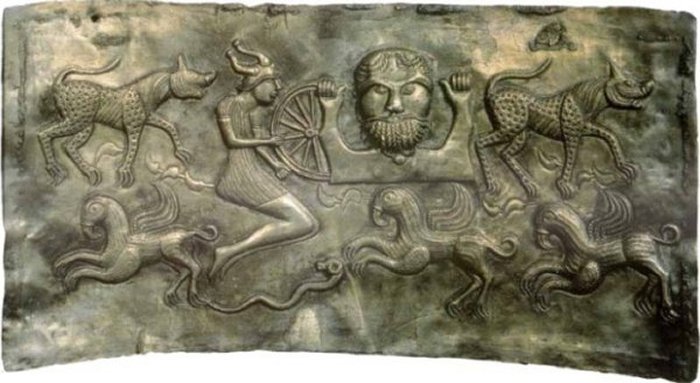Taranis – Celtic God Of Wheel And Thunder Resembled Roman God Jupiter
Ellen Lloyd - AncientPages.com - In Celtic mythology Taranis was the mighty god of thunder. In Welsh and Breton, the word for thunder is taran. Taranis is not as famous as Thor, the Norse god of thunder, Perun, the Slavic god associated with thunder, or Indra, the Vedic god who is frequently depicted holding and using vajra, a terrifying, light-throwing thunderbolt.
Taranis As A Celtic God Of Thunder
Nevertheless, ancient Roman inscriptions reveal that the Celts once worshiped Taranis as a deity with authority over the weather and the sky. He was identified with the ancient Roman god Jupiter, associated with thunder, lightning, and storms. In addition, there is evidence that Taranis was also the Celtic wheel god.
Left: Taranis (Jupiter with wheel and thunderbolt), Le Chatelet, Gourzon, Haute-Marne, France. Credit: Public Domain. Right: Golden Celtic wheel with symbols, Balesme, Haute-Marne. Musée d'Archéologie Nationale. Credit: Public Domain
Archaeological findings have established that Taranis was worshipped not only in Gaul, Britain, and Ireland but also in regions like the Rhineland and the Danube.
It is difficult to determine Taranis's importance, but Lucan, the first Roman poet, considered him one of the three most dominant Celtic deities. Unfortunately, few surviving inscriptions exist, and those that have been found are geographically widespread, making it hard to say how much attention the Celts paid to Taranis.
“At Tours and Orgon (both France) dedications to ‘Thunder’ were probably intended as references to this deity. The same probably applied to dedications to the ‘Thunderer’ at Böckingen and Godramstein (western Germany) and also at Scardona (Croatia).
This last inscription and another from Thauron (France) explicitly equated Taranis with Jupiter.”
“Taranis may also have had connections with the Underworld since a medieval monastic commentator on Lucan (living in Berne, Switzerland) equated Taranis with Dis Pater (or Pluto), the god of the Underworld.” 1
Dangerous Cult Of Taranis
Lucan also explained followers of Taranis belonged to a cruel cult that practiced human sacrifices.
“The human victims were in the first place propitiatory, to appease angry gods, but they were also offered for thanksgiving. Even wives and children were sacrificed before a battle to ensure victory. Prisoners were immolated after a victory in thanksgiving to the gods—Lucan speaks of the cruel sacrifices offered by tribes in Gaul dwelling between the Seine and the Loire to such deities as Teutatis, Esus, and Taranis. Cæsar says that persons in extreme sickness or who are exposed to the perils of war, sacrifice human victims or vow to do so, employing the Druids to carry out the rite.
Gundestrup cauldron, created between 200 BCE and 300 CE, is thought to have a depiction of Taranis on the inner wall of cauldron. Credit: Public Domain.
They believe that unless a life is given for a life the majesty of the immortal gods cannot be appeased. Such sacrifices were made by private individuals or in public ceremonies. He speaks of one public ceremony which for horror cannot be surpassed. Figures of immense size, their limbs made of wicker, were filled with human victims, and set on fire. The victims pleasing to the gods were thieves or other criminals. 2
Taranis was usually depicted as a bearded god with a thunderbolt in one hand and a wheel in the other.
Taranis As A Celtic Wheel God
His connection to the wheel is quite interesting. The wheel was an important Celtic symbol often depicted on coins. Still, it can also be found on the beautiful Gundestrup Cauldron, a magnificent vessel made from richly decorated plates of silver assembled into a single cauldron.
Archaeologists have unearthed thousands of votive wheels called Rouelles in sanctuaries in Belgic Gaul. These ancient artifacts dating from 50 B.C. to 50 C.E. are believed to correspond to the Taranis cult.
One of the reasons why so many votive wheels have been found in sanctuaries is that a wheel could represent a full chariot. As the chariot was the vehicle of the celestial gods, it was also associated with the Sun and Moon.
Votive wheels called Rouelles. Credit: Public Domain
As previously mentioned, many “depictions of the God-of-the-Wheel resemble Jupiter and they bear his attributes of eagle and thunderbolt. The wheel as a symbol is certainly Celtic rather than Roman. Therefore, in both a literary source and in iconography, a Celtic divinity has been “equated” with a classical one. If the Celtic version of Jupiter was named Taranis and if a Celtic attribute appears on archaeological depictions of the Roman god, it seems not unreasonable to suppose that these archaeological representations must symbolize a Celto-Roman deity who was very possibly referred to by his worshippers as “Jupiter-Taranis’”. 3
Very few inscriptions of Taranis have been unearthed, making him a rather obscure god, but it doesn’t necessarily mean he was insignificant to our ancestors.
Updated on March 27, 2024
Written by Ellen Lloyd – AncientPages.com
Copyright © AncientPages.com All rights reserved. This material may not be published, broadcast, rewritten or redistributed in whole or part without the express written permission of AncientPages.com
Expand for references- Whittock, Martyn - A Brief Guide to Celtic Myths and Legends
- A. MacCulloch - The Celtic and Scandinavian Religions
- Green, Miranda. "The Worship of the Romano-Celtic Wheel-God in Britain Seen in Relation to Gaulish Evidence." Latomus38, no. 2 (1979): 345-67.
More From Ancient Pages
-
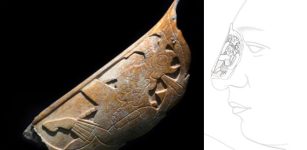 Ancient Maya Nose Ornament Made Of Human Bone Discovered In Palenque
Archaeology | Sep 24, 2023
Ancient Maya Nose Ornament Made Of Human Bone Discovered In Palenque
Archaeology | Sep 24, 2023 -
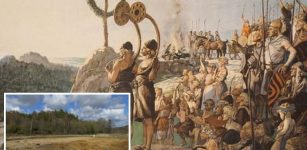 82 Mysterious 3,000-Year-Old Pits Discovered In Sweden – Bronze Age Cooking Pits And Ancient Ceremonial Center?
Archaeology | Jun 13, 2017
82 Mysterious 3,000-Year-Old Pits Discovered In Sweden – Bronze Age Cooking Pits And Ancient Ceremonial Center?
Archaeology | Jun 13, 2017 -
 Surprising Ancient Signs Found On The Ceiling Of An Egyptian Temple In Saqqara Could Rewrite History
Featured Stories | Oct 29, 2024
Surprising Ancient Signs Found On The Ceiling Of An Egyptian Temple In Saqqara Could Rewrite History
Featured Stories | Oct 29, 2024 -
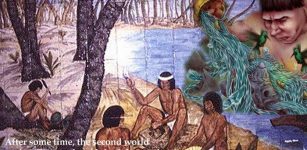 Creator God Kururumany Who Introduced Death Into The World And Deprived Humans Of Immortality
Featured Stories | Dec 19, 2016
Creator God Kururumany Who Introduced Death Into The World And Deprived Humans Of Immortality
Featured Stories | Dec 19, 2016 -
 Ancient Biblical Manuscript M.910 We Are Afraid To Open May Contain A Surprise
Archaeology | Feb 19, 2018
Ancient Biblical Manuscript M.910 We Are Afraid To Open May Contain A Surprise
Archaeology | Feb 19, 2018 -
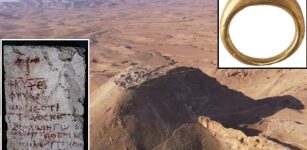 Byzantine Greek Inscription Of Psalms 86 Found In Hyrcania
Archaeology | Sep 29, 2023
Byzantine Greek Inscription Of Psalms 86 Found In Hyrcania
Archaeology | Sep 29, 2023 -
 Hidden Records Of A Civilization Frozen In Time – Mysterious Time Capsules
Featured Stories | Aug 31, 2020
Hidden Records Of A Civilization Frozen In Time – Mysterious Time Capsules
Featured Stories | Aug 31, 2020 -
 Why Is A ‘Piggy Bank’ Shaped Like A Pig?
Ancient History Facts | Jun 11, 2018
Why Is A ‘Piggy Bank’ Shaped Like A Pig?
Ancient History Facts | Jun 11, 2018 -
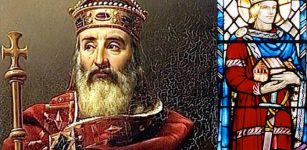 King Offa Of Mercia And The Murder Of King Ethelbert – Revenge Or Jealousy?
Featured Stories | Jul 19, 2018
King Offa Of Mercia And The Murder Of King Ethelbert – Revenge Or Jealousy?
Featured Stories | Jul 19, 2018 -
 On This Day In History: Battle Of Lagos Took Place Between Royal Navy Of Britain and France – On August 19, 1759
News | Aug 19, 2016
On This Day In History: Battle Of Lagos Took Place Between Royal Navy Of Britain and France – On August 19, 1759
News | Aug 19, 2016 -
 Incredibly Rare 3,500-Year-Old Wooden Spade Found In English Trench
Artifacts | Oct 30, 2024
Incredibly Rare 3,500-Year-Old Wooden Spade Found In English Trench
Artifacts | Oct 30, 2024 -
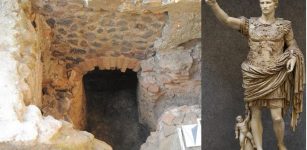 Lost Villa Of First Roman Emperor Augustus Found At Somma Vesuviana In Southern Italy
Archaeology | Apr 19, 2024
Lost Villa Of First Roman Emperor Augustus Found At Somma Vesuviana In Southern Italy
Archaeology | Apr 19, 2024 -
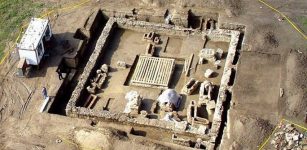 Viminacium Ancient Roman Camp: Sarcophagus With Skeletons, Rich Grave Goods Found In Serbia
Archaeology | Jun 5, 2018
Viminacium Ancient Roman Camp: Sarcophagus With Skeletons, Rich Grave Goods Found In Serbia
Archaeology | Jun 5, 2018 -
 Cooking, Roasting And Eating Of Root Plants Is 120,000-Year-Old Habit
Archaeology | Jun 7, 2019
Cooking, Roasting And Eating Of Root Plants Is 120,000-Year-Old Habit
Archaeology | Jun 7, 2019 -
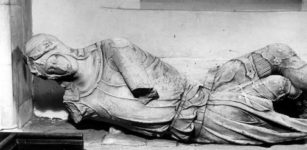 Aldworth Giants: Knights Who People Tried To Erase From History
Featured Stories | Jul 2, 2015
Aldworth Giants: Knights Who People Tried To Erase From History
Featured Stories | Jul 2, 2015 -
 Remnants Of A Royal Rest House That Served As A Temporary Residence For Pharaoh Thutmose III
Archaeology | May 9, 2024
Remnants Of A Royal Rest House That Served As A Temporary Residence For Pharaoh Thutmose III
Archaeology | May 9, 2024 -
 Siberian Shigir Idol With Seven Faces Is The World’s Oldest Wooden Sculpture
Archaeology | Sep 1, 2015
Siberian Shigir Idol With Seven Faces Is The World’s Oldest Wooden Sculpture
Archaeology | Sep 1, 2015 -
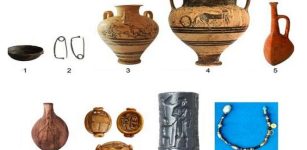 Cyprus’s Copper Deposits Created One Of The Most Important Trade Hubs Of The Bronze Age
Archaeology | Mar 17, 2023
Cyprus’s Copper Deposits Created One Of The Most Important Trade Hubs Of The Bronze Age
Archaeology | Mar 17, 2023 -
 Does A Baffling Artifact Offer Evidence Of Ancient Extraterrestrial Visitation In New Zealand? – Experts Investigate – Part 2
Ancient Mysteries | Jul 23, 2020
Does A Baffling Artifact Offer Evidence Of Ancient Extraterrestrial Visitation In New Zealand? – Experts Investigate – Part 2
Ancient Mysteries | Jul 23, 2020 -
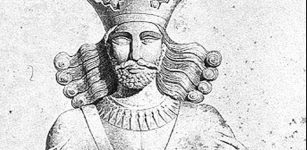 Darabgerd: One Of The Oldest Cities Dated To Achaemenid Era
Featured Stories | Jan 28, 2021
Darabgerd: One Of The Oldest Cities Dated To Achaemenid Era
Featured Stories | Jan 28, 2021


